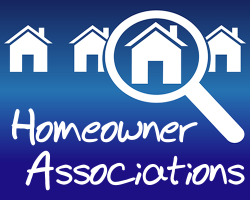 If you reside in a community that’s part of a homeowners’ association (HOA), you should understand what the association’s insurance obligations are relative to your own.
If you reside in a community that’s part of a homeowners’ association (HOA), you should understand what the association’s insurance obligations are relative to your own.
If you don’t carefully assess this dynamic, you could find yourself with a coverage gap if you assume that the association’s insurance covers something it actually doesn’t.
HOA rules usually require that all residents within the association’s jurisdiction become members and pay a fee. Associations can create their own bylaws for the community or building, and sometimes hire an outside property management company in order to enforce maintenance and other standards.
The association’s obligations will depend on the type of home you have:
A single-family, detached home – The HOA most likely only owns community amenities, such as:
• Recreational facilities, like a clubhouse, tennis courts, and parks,
• Gates to or inside the community, and
• Streets, if they are private.
A condominium – The HOA owns the building and you own the property inside your condo. In that case, the association’s insurance would cover:
• Main utilities running through the building,
• Elevators and stairwells,
• Garbage facilities, and
• The main lobby and hallways throughout the building.
Know who is responsible for what
Your goal should be to ensure you have no coverage gaps. Start by reviewing your association’s bylaws and other documents, like CC&Rs.
In some cases, your HOA’s rules might stipulate how much of a certain type of coverage you should carry or even which company you need to buy your policy from. It’s important to know this so you can judge whether a given condo or association is the right fit for you and to avoid penalties down the road.
Condominiums
For condomiums, two types of HOA coverage are common:
Studs-out coverage – The most common condominium HOA coverage essentially includes everything outside of your unit’s drywall.
The insurance would pay for damage to the building itself, like leaking roofs, an elevator breakdown or a tree falling into the side of the building.
Your insurance, meanwhile, would cover everything inside your unit, including structural elements such as walls, fixtures, flooring and cabinets.
All-in coverage – This protects the basic building and common areas plus the structural elements and fixtures in your own unit.
Having HOA all-in coverage likely means you’d need less individual coverage against property damage, as the only property you’d be responsible for are personal belonging (clothes, records, jewelry, etc).
Whatever you do, don’t skimp on the personal liability portion. A water leak or condo fire can become a much bigger loss in a condominium building since both tend to spread to other units. If that happens, it’s no longer a simple home insurance claim, but a potentially costly liability claim.
This is why many HOAs require homeowners to maintain a minimum level of personal liability.
Homes
If you own a single-family, detached home, you will need to have traditional home insurance, as the HOA does not insure your dwelling.
In this case, the HOA policy would cover mains in the streets as well as any clubhouse or parks. Your policy would include the pipes leading from the street into your house, your yard up to the street, the dwelling and its contents.
The underinsured HOA
Sometimes HOAs don’t carry enough insurance and members have to make up for the shortfall through assessments, which can be steep in the event of a significant loss.
For HOA members, insurers offer “loss assessment” coverage, which will pay your share if the association does not have sufficient insurance to cover a loss.
One last thing…
If you are not receiving a discount on your homeowner’s insurance policy and you are a member of an HOA, be sure to ask us about it.
If the insurer does not currently offer an HOA discount, be sure to ask, as you might be able to negotiate a lower price anyway.
